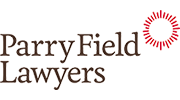School boards are employers which mean they have certain obligations and powers. They can appoint, suspend, and dismiss staff and the principal.[1] They have responsibilities under other Acts such as the Employment Relations Act 2000, the HRA, the Privacy Act 2020 and the Health and Safety at Work Act 2015.
Generally, under the Employment Relations Act 2000 (the ERA) parties in an employment relationship are under an obligation to deal with one another in good faith and not do anything to mislead or deceive each other.[2] The object of the ERA is to build productive employment relationships through promoting good faith.[3]
State and State integrated school boards as employers also have a responsibility to be a ‘good employer’ under the Public Service Act 2020.[4] A ‘good employer’ creates policies accepted as necessary for the “fair and proper treatment of employees in all aspects on their employment”.[5] Each school board will have their own policies in place. They must ensure they comply with their policies and annually report on their compliance.[6]
Staff employed in State schools such as principals, teachers and other staff are generally on ‘Collective Agreements’ with specific terms and conditions covering their roles. Education collective agreements include equal employment opportunity clauses to recognise disadvantaged groups in employment. However, these collective agreements often vary depending on the particular category of school (e.g. primary, secondary or area school). This means there is no one size fits all in relation to employment law obligations for schools. It is advised that you consult a lawyer if you have questions about obligations under your Collective Agreements.
As the employer, the board of a State or State integrated school is accountable for employment matters despite delegating employment management to the principal. These delegations need to be documented so the principal and the board are aware of their responsibilities. When employment issues arise, matters only come before the board through the procedures set out by the board or where a complaint is raised. If the issue is in relation to a principal however the board has direct involvement.
Schools will have performance management processes that teachers and staff are required to participate in. These assess and monitor staff to ensure they are providing effective education and services. Staff skills, knowledge and training are developed in a way that optimises student’s learning outcomes. The school board is responsible for managing the principal’s performance and ensuring the principal effectively undertakes staff performance management also. Professional standards are set out in staff employment agreements which are used to assess performance.
School boards must create a performance management system that fits their school. Section 599 of the Education and Training Act 2020 (ETA) allows the Chief Executive of the Ministry of Education (Secretary) to prescribe matters employers are to have regard to when assessing teacher performance. The Secretary prescribes guidelines setting out what boards need to have in place in assessing the performance of teachers. Current guidelines on the Minister of Education website are based upon s 77C of old repealed Education Act 1989 but can still provide some guidance.
Having good performance management allows teachers to understand what is expected of them and can be aided in achieving those expectations. Frequent conversations regarding any concerns or to ensure progress is being made are important. This removes any surprises or uncertainty when performance is evaluated. Conversations includes appraisal and elicit professional trust and growth.
The ETA removed performance appraisal requirements and replaced it with a professional growth cycle (PGC) which takes a more holistic approach to performance management. The principal or professional leader will design the process for the professional growth cycle while consulting teachers. The Teaching Council dictates elements that will be in the cycle but generally it is up to the leadership team and teachers to determine what it will look like. A summary statement outlines whether the teacher has met the Standards for the Teaching Profession. This new approach focusses on professional learning journeys as opposed to compliance activities as seen in the old approach.
This article is general in nature and is not a substitute for legal advice. You should talk to a lawyer about your specific situation. Reproduction is permitted with prior approval and credit being given back to the source. Contact Kris Morrison at krismorrison@parryfield.com to request this or for any other questions.
[1] Education and Training Act 2020, ss 128, 129.
[2] Employment Relations Act 2000, section 4.
[3] Employment Relations Act, 2000, section 3.
[4] Public Service Act 2020, section 73.
[5] Public Service Act 2020, section 73(3).
[6] Public Service Act 2020, section 73(1).

